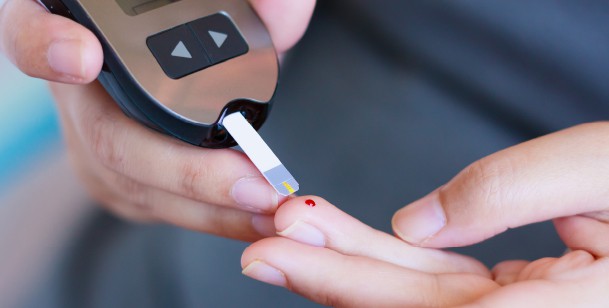A diabetic coma is a coma that can affect people with both type 1 and type 2 diabetes. If you have diabetes or know someone with diabetes, you may have questions about diabetic comas, including how long a diabetic coma can last and how to treat and prevent them. There are a number of factors that can cause or complicate a diabetic coma, so the short answer to the above questions is that it depends on what kind of diabetic coma the affected individual is in. Read on for more information about diabetic comas, including the various types of diabetic comas and how to treat them.

What is a Diabetic Coma?
A diabetic coma is a medical emergency wherein an individual will lose consciousness as a result of an imbalance in their insulin and glucose levels. Diabetic comas are relatively uncommon, but they occur often enough that it’s important to be aware of the potential causes, signs, and symptoms of them in order to prevent yourself or someone you love from entering one.
What Causes a Diabetic Coma?
A diabetic coma is most often caused by either hyperglycemia or hypoglycemia. These conditions occur at opposite ends of the spectrum of blood glucose levels in the body. Extremely high blood glucose levels, also known as blood sugar levels, are referred to as hyperglycemia, while extremely low blood sugar levels are referred to as hypoglycemia. Hyperglycemia often causes dehydration, which can lead to a loss of consciousness. Hypoglycemia leads to a loss of glucose in the brain, which can also lead to a diabetic coma.
Another less common cause of diabetic comas is diabetic ketoacidosis (DKA). Typically, the body will use a process called cellular respiration to convert glucose into energy. When blood sugar levels are too low, the body will begin to burn fat for energy, which produces ketones. When ketone levels in the blood are too high, your blood will become more acidic and will make you sick, lead to a diabetic coma, or lead to death. People with type 1 diabetes are at a higher risk for developing DKA, but it can happen to anyone.

Signs and Symptoms
Because any one of the above conditions can cause someone to enter a diabetic coma, it’s vital that you understand the signs and symptoms of each condition and know when to seek help. Furthermore, understand that these are not the only signs of these conditions, nor do you need to experience all of them before reaching out for help. If you suspect that you or a loved one is experiencing any symptoms of high or low blood sugar or high ketone levels, check your blood sugar levels and seek professional help immediately.
Signs of Hyperglycemia
- Dehydration, increased thirst, or dry mouth
- Frequent urination
- Blurry vision
- Fatigue and headaches
- Fruity or sweet smelling breath
- Weakness and confusion
- Nausea and vomiting
Signs of Hypoglycemia
- Pale skin
- Exhaustion or fatigue
- Shaking or trembling
- Hunger or nausea
- Heart palpitations or an irregular heartbeat
- Moodiness (irritability or anxiety)
- Tingling or numb lips and mouth
- Confusion or inability to concentrate
- Blurry or tunnel vision
- Seizures
Signs of Diabetic Ketoacidosis (DKA)
- Dehydration or dry mouth
- Frequent urination
- Fatigue
- Nausea and vomiting
- Confusion or inability to concentrate
- Fruity or sweet smelling breath
- Difficulty breathing
What Happens if a Diabetic Coma Goes Untreated?
Diabetic comas are medical emergencies, and require immediate medical attention. If someone you love is in a diabetic coma, do not try to wake them up on your own or wait for them to naturally come out of the coma. The only way to come out of a diabetic coma is to return blood glucose levels to a healthy range, which can only be done by a medical professional.
Because only a medical professional can safely treat a diabetic coma, there is no concrete answer for how long a diabetic coma can last. A diabetic coma will ultimately last until the individual in the coma receives proper treatment. This means that it is possible to leave a diabetic coma untreated for a prolonged amount of time. However, if a diabetic coma is left untreated, meaning that the individual is left in the coma, the individual may experience irreversible brain damage or even death.

How to Recover from a Diabetic Coma
Individuals who receive professional medical treatment for their diabetic coma typically make full recoveries. Because treatment involves the restoration of blood glucose levels to their normal range, individuals usually begin to feel better immediately after treatment, and tend to wake up from their diabetic comas shortly after treatment begins.
During the recovery process, your doctor may make some suggestions to help prevent a diabetic coma in the future. Your doctor may suggest a medical identification bracelet so that, in the event of another diabetic coma, people in the surrounding area will know how to provide help. They may also help you develop a new plan for monitoring your blood sugar levels if your current plan is not sufficient. If you enter a diabetic coma without knowing that you are diabetic, your doctor will walk you through a treatment plan for your diabetes, including medications and lifestyle adjustments.
Preventing a Diabetic Coma
Diabetic coma prevention mainly involves the frequent monitoring of your blood sugar levels in order to avoid hyperglycemia, hypoglycemia, or DKA. It’s important to be aware of your blood sugar levels and of signs of an imbalance to be able to adjust if needed. If traditional treatment plans, which vary for each diabetic person, are hard to keep track of, there are many options that take the task of monitoring out of your hands. Traditional methods for managing diabetes typically involve injecting insulin up to 4 or 5 days per day and checking blood glucose levels up to 3 times per day. This can be hard to keep up with, especially if the diabetic individual goes to work or school.
Options for less manual diabetes treatment include constant glucose monitors (CGMs) and insulin pumps. A CGM uses a sensor placed under the skin to test your blood sugar levels every few minutes throughout the day and night. These include a display monitor that makes it easy to view your glucose levels at any time. Insulin pumps similarly involve a small needle that is inserted into the skin under the pump, which maintains insulin levels by modeling the body’s natural processes. An insulin pump will constantly pump small amounts of insulin into your body rather than large amounts at different intervals throughout the day. When looking for diabetes treatment equipment, it is important to be sure that the equipment you order has been medically reviewed and tested by professionals.
Another important aspect of diabetic coma prevention is preparation. One should be prepared for the possibility of low or high blood sugar levels. Doctors often advise that people with diabetes carry glucose tablets in the event that their blood sugar levels fall too low, so that they can easily raise the level. If one’s blood sugar levels become too high, Healthline media suggests exercise as a quick way to lower blood sugar levels. Be sure not to exercise if you are experiencing DKA, as exercise will increase the levels of ketones in your urine.
Diabetic Coma Care at Village Emergency Centers
Remember that this blog is meant for informational purposes only and should not be used in place of professional help. If you are experiencing symptoms of hyper- or hypoglycemia or notice someone becoming unconscious, call 911 and seek professional medical care immediately. Trained medical professionals will be able to evaluate the cause of a diabetic coma and provide necessary treatment for the comatose individual. When you need help, go to the medical experts you can trust.
